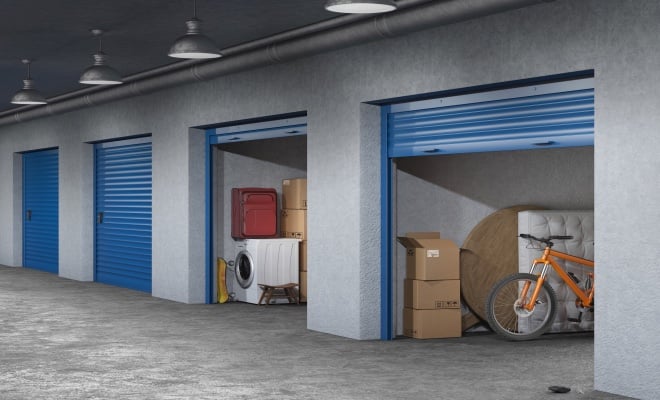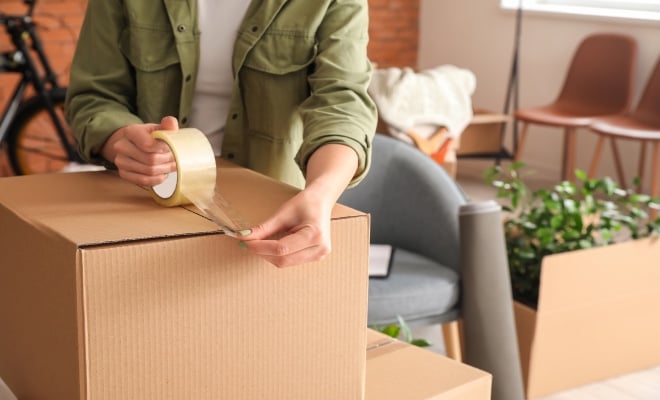Moving for the first time can feel stressful. There are so many things to pack and figure out where to put them. A lot of first-time movers often get stuck when they need to leave their old place, but their new home isn’t ready yet. Or maybe you just don’t have enough space to keep everything while you’re moving.
That’s where self storage comes in handy. It gives you a safe place to keep your stuff until you’re ready to move it all into your new home. Think of it like having extra space that you can use for as long as you need it. When you understand how self storage works, moving can become way less overwhelming. You don’t have to rush to move everything at once. You can take your time and figure things out as you go.
This guide will show you what you need to know about using self storage for your first move so that you can feel more confident about the whole process. Read on!

What Is Self Storage?
Self storage is basically renting a space to keep your stuff when you don’t have enough room at home. These spaces are called storage units, and they come in different sizes. Some are as small as a locker, while others are big enough to hold furniture. You can even store cars or motorcycles at some places. You can rent these units for just a few weeks or keep them for months—whatever you need. It’s like having your own personal room that you can lock up.
Here’s how it works: You get your own unit and put your own lock on it. Reputable facilities keep everything secure with measures like gates, cameras, and staff who monitor the area. Most places let you visit any time during open hours to drop stuff off or grab what you need. Some even offer 24-hour access for extra convenience.
Self storage also works for business storage. This gives small business owners a place to store inventory or supplies when space is tight at their main location. Anyone searching for a self storage facility near Canberra can find options that suit different needs, whether it is for home or business.
Picking the Right Size
Choosing the right size storage unit can save both money and trouble. A unit that is too small cannot fit everything, while a unit that is too big wastes money.
Here’s a quick breakdown of what fits in different sizes:
- 5×5 unit: Perfect for a few boxes or small household items.
- 5×10 unit: Holds what you’d find in a studio apartment or small bedroom.
- 10×10 unit: Fits most of a one-bedroom apartment’s furniture and boxes.
- 10×20 unit: Big enough for a small house’s worth of items, about the size of a one-car garage.
Some places offer drive-up storage units, which let people unload items straight from a moving truck right to the unit. That feature saves time and makes moving heavy things easier.
Before you pick a size, make a list of what you’re storing and measure any big furniture pieces. The storage place staff can also help you figure out what size you need. They’ve seen it all before and know what fits where.
Understanding Storage Costs
The cost of a self-storage unit is influenced by several key factors, such as unit size, location, and the duration of your rental. As expected, larger storage units will always be more expensive than smaller ones. Similarly, units in busy cities often have higher prices compared to those in more rural or less competitive locations.
Climate control might raise the cost a bit, but this feature provides a stable environment, protecting sensitive belongings like electronics, important documents, wooden furniture, and delicate fabrics from extreme temperature fluctuations and humidity. Many renters find the added expense worthwhile for the peace of mind that their items are preserved in optimal condition.
But before signing a rental agreement, it is smart to read it carefully. Most places offer month-to-month rentals, which are flexible if your plans change. However, the agreement will also list any extra fees, such as charges for late payments or required insurance. To avoid moving budget surprises, always ask about all costs upfront.
Ensuring Security and Safety
Keeping personal items safe matters. Most storage places have security measures like cameras, bright lights, and coded gates. Some use alarms or keypad entries so only renters can get inside.
That said, it is a good idea to visit the storage facility before renting. Look around to see if the grounds are clean and the locks are in good shape. Staff members should also be able to explain security features and show how they keep renters’ belongings safe.
Familiarizing Yourself with Facility Rules and Access
Each storage place has different rules, so it’s worth asking about them upfront. Some facilities are open 24/7, while others have specific business hours. Find out when you can get to your unit so you don’t show up when it’s locked up.
Most places don’t allow hazardous stuff like gasoline, paint, or fireworks. So, if you’re planning to store a vehicle or need drive-up access, check those rules too, since they can vary.
The staff should be able to walk you through all the rules so you know what to expect. A good storage team can make your first moving experience much smoother.
Moving Out of Storage
Once you’ve settled into your new place and no longer need your storage unit, it’s time to close things out properly. To start, take everything out and sweep the unit clean. This helps you avoid cleaning fees.
Check your contract too, to see if you need to give written notice before moving out. Some places want 30 days’ notice, while others are more flexible.
Don’t forget to return your keys or gate cards when you’re done. This helps close your account without any issues. And lastly, do a final walkthrough to make sure you didn’t leave anything behind and that the unit is in good shape.
Tips for First-Time Movers
Here are some helpful tips to make your first storage experience go smoothly:
- Book early: Reserve your unit ahead of time, especially during busy moving months like summer.
- Pack smart: Packing carefully makes sure items stay safe. Use sturdy boxes and wrap fragile items well. Put heavier things in smaller boxes so they’re easier to carry, too.
- Label everything: Write what’s inside each box so you can find things quickly later.
- Make an inventory: Keep a list of what you’re storing so you don’t forget what’s in there.
Following these steps can save you time, money, and stress during your move.
Conclusion
Self storage can be a game-changer for first-time movers. It gives you the extra space while you figure out your new living situation. But the key is doing your homework. Research facilities and helpful features like climate control or drive-up access, understand costs, and know the rules.
Whether you need seasonal storage for a few weeks during your move or want a longer-term solution for extra belongings, self storage gives you flexibility when you need it most. With a little planning, you can turn what feels like an overwhelming move into something much more manageable.
We hope you found this blog post on How Does Self Storage Work For First-Time Movers? useful. Be sure to check out our post on Tips and Tricks For Efficient Storage Unit Organization for more great tips!
Have Experience in the Moving Industry? Want an Additional Income Stream? Work With All Around Moving!
Join the All Around Moving Services Company, Work With Us program. We provide you with the carriers and storage facilities names, or you can use your own and so by joining, you could have your own company up and running very fast.
Click here to learn more how a nominal one-time start-up fee of $275.00, gives you the “key” to have your running business.






